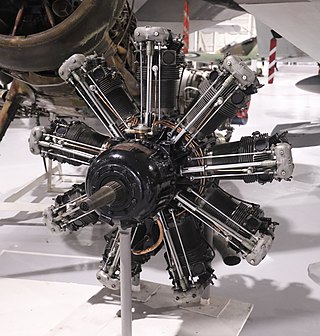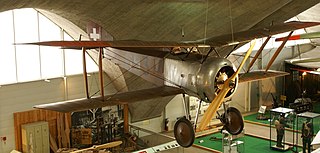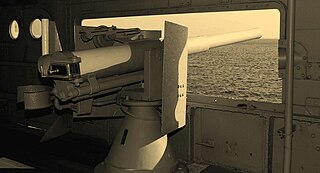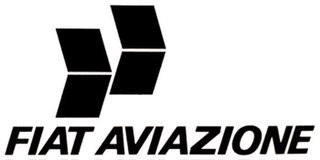
Alfa Romeo Automobiles S.p.A. is an Italian luxury carmaker known for its sports-oriented vehicles, strong auto racing heritage, and iconic design. Headquartered in Turin, Italy, it is a subsidiary of Stellantis Europe and one of 14 brands of multinational automotive company Stellantis.

The Bristol Jupiter is a British nine-cylinder single-row piston radial engine that was built by the Bristol Aeroplane Company. Originally designed late in World War I and known as the Cosmos Jupiter, a lengthy series of upgrades and developments turned it into one of the finest engines of its era.

The Fiat 500 is an economy / city car that was manufactured and marketed by Fiat Automobiles from 1957 until 1975. It was sold as a two-door semi-convertible or saloon car and as a three-door panel van or estate car.

The Fiat Panda is a city car manufactured and marketed by Fiat since 1980, currently in its third generation. The first generation Panda, introduced in 1980, was a two-box, three-door hatchback designed by Giorgetto Giugiaro and Aldo Mantovani of Italdesign and was manufactured through 2003 — receiving an all-wheel drive variant in 1983. SEAT of Spain marketed a variation of the first generation Panda under license to Fiat, initially as the Panda and subsequently as the Marbella (1986–1998).

Nieuport, later Nieuport-Delage, was a French aeroplane company that primarily built racing aircraft before World War I and fighter aircraft during World War I and between the wars.

The Nieuport 17 C.1 is a French sesquiplane fighter designed and manufactured by the Nieuport company during World War I. An improvement over the Nieuport 11, it was a little larger than earlier Nieuports and better adapted to the more powerful engine than the interim Nieuport 16. Aside from early examples, it had the new Alkan-Hamy synchronization gear, permitting the use of a fuselage-mounted synchronised Vickers gun firing through the propeller disc.

The Fiat 600 is a small, rear-engined city car and economy family car made by Italian carmaker Fiat from 1955 to 1969 — offered in two-door fastback sedan and four-door Multipla mini MPV body styles. The 600 is considered a pop icon of the Italian economic miracle, and the three-row seating Multipla, though diminutive and odd-looking, is seen as one the first mass-produced minivans.

Gnome et Rhône was a major French aircraft engine manufacturer. Between 1914 and 1918 they produced 25,000 of their 9-cylinder Delta and Le Rhône 110 hp (81 kW) rotary designs, while another 75,000 were produced by various licensees. These engines powered the majority of aircraft in the first half of the war, both Allied designs as well as German examples produced by Motorenfabrik Oberursel.

The Carden Loyd tankettes were a series of British tankettes of the period between the World Wars, the most successful of which was the Mark VI, the only version built in significant numbers. It became a classic tankette design worldwide, was licence-built by several countries and became the basis of several designs produced in various countries.

The Nieuport 11, nicknamed the Bébé, is a French World War I single seat sesquiplane fighter aircraft, designed by Gustave Delage. It was the primary aircraft that ended the Fokker Scourge in 1916. The type saw service with several of France's allies, and gave rise to the series of "vee-strut" Nieuport fighters that remained in service into the 1920s.

The Nieuport 27 was a World War I French sesquiplane fighter aircraft designed by Gustave Delage. The 27 was the last of the line of Nieuport "V-strut" single seat fighters that began with the Nieuport 10 of 1914. Operational examples supplemented the very similar Nieuport 24 and 24bis in operational squadrons in late 1917 and many would also be used as advanced trainers.

MEBEA was an important Greek vehicle manufacturer, producer of light trucks, passenger automobiles, motorcycles, motorbike engines, agricultural machinery and bicycles.

Dante Alighieri was the first dreadnought battleship built for the Regia Marina and was completed in 1913. The ship served as a flagship during World War I, but saw very little action other than the Second Battle of Durazzo in 1918 during which she did not engage enemy forces. She never fired her guns in anger during her career. Dante Alighieri was refitted in 1923, stricken from the Navy List five years later and subsequently sold for scrap.

Ansaldo was one of Italy's oldest and most important engineering companies, existing for 140 years from 1853 to 1993.

The Hanriot HD.1 was a French World War I single-seat fighter aircraft. Rejected for service with French squadrons in favour of the SPAD S.VII, the type was supplied to the Aviation Militaire Belge and the Corpo Aeronautico Militare of the Royal Italian Army, with both of which it proved highly successful. Of a total of about 1,200 examples built, 831 were produced by Italian companies under licence.

Aéroplanes Voisin was a French aircraft manufacturing company established in 1905 by Gabriel Voisin and his brother Charles, and was continued by Gabriel after Charles died in an automobile accident in 1912; the full official company name then became Société Anonyme des Aéroplanes G. Voisin. During World War I, it was a major producer of military aircraft, notably the Voisin III. After the war Gabriel Voisin abandoned the aviation industry, and set up a company to design and produce luxury automobiles, called Avions Voisin.

The Dewoitine D.1 was a French single-seat fighter aircraft of the 1920s, built by the French industrial company Dewoitine.

The QF 12-pounder 12-cwt gun (Quick-Firing) was a common, versatile 3-inch (76.2 mm) calibre naval gun introduced in 1894 and used until the middle of the 20th century. It was produced by Armstrong Whitworth, Elswick and used on Royal Navy warships, exported to allied countries, and used for land service. In British service "12-pounder" was the rounded value of the projectile weight, and "12 cwt (hundredweight)" was the weight of the barrel and breech, to differentiate it from other "12-pounder" guns.

Fiat Aviazione was an Italian aircraft manufacturer, at one time part of the Fiat group, focused mainly on military aviation. After World War I, Fiat consolidated several Italian small aircraft manufacturers, like Pomilio and Ansaldo. Most famous were the Fiat biplane fighter aircraft of the 1930s, the Fiat CR.32 and the Fiat CR.42. Other notable designs were the fighters CR.20, G.50, G.55 and a bomber, the Fiat BR.20. In the 1950s, the company designed the G.91 light ground attack plane.
The Military ranks of the Kingdom of Italy were the military insignia used by the Italian Armed Forces when Italy was the Kingdom of Italy (1861–1946). During the World Wars, the Carabinieri, as the then-most senior corps of the Army, wore similar insignia to those used by the rest of the service.



















